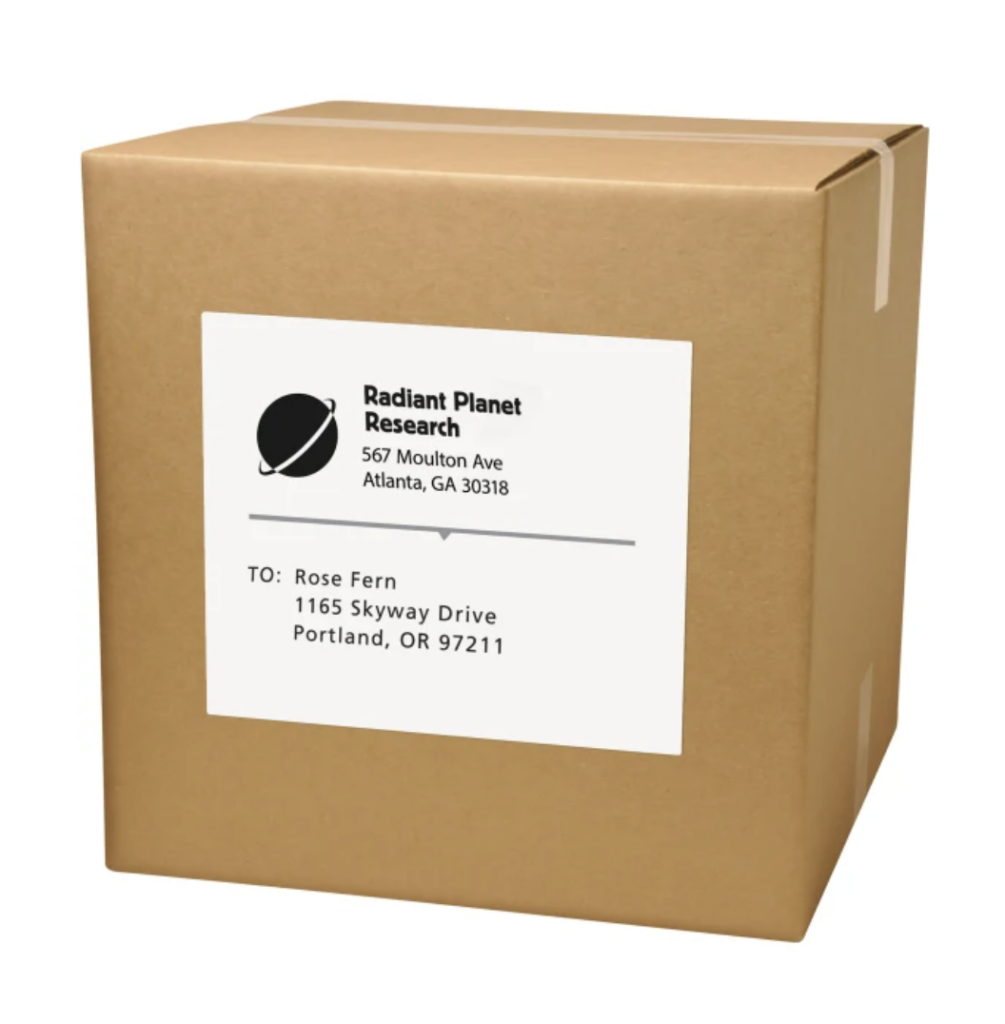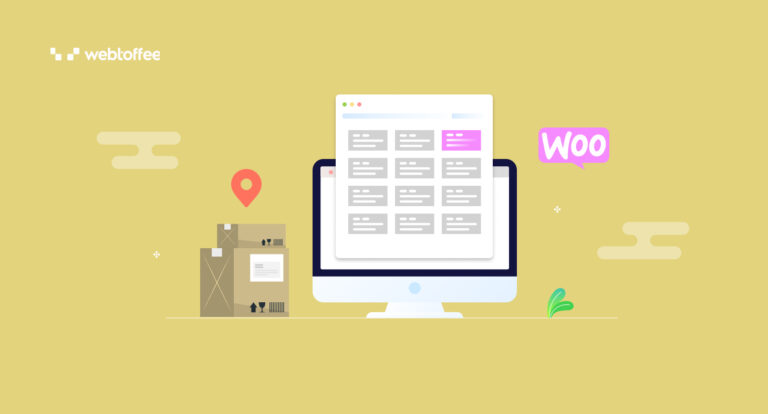Address labels may seem like a small detail, but their importance cannot be understated. These labels play a role in ensuring that our mail and packages reach their intended destinations accurately and efficiently.
In this blog, we’ll delve into the practical aspects of address labels, shedding light on what they are, why they matter, and how they simplify the process of sending and receiving packages. Let’s explore the various aspects of address labels, from their essential components to printing techniques and evolving trends.
An address label is a tag or adhesive label affixed to postal items like envelopes and small packages that contain essential delivery information, such as the recipient’s address. It’s commonly used for items sent via post or courier services.
Additional details like a return address, the supplier’s contact information, marketing messages, or greetings might also be included on the label.
Address labels primarily identify and direct mail and packages to their intended recipients. They serve as a convenient and efficient way to provide accurate delivery information for items being sent through postal or courier services. This is the first step to ensuring the item reaches the correct destination without errors.
Address labels offer several advantages:
Accuracy: Address labels are typically printed, ensuring clear and legible text. Handwriting can sometimes be difficult to read, leading to errors in delivery or delays.
Time Efficiency: Using address labels is much quicker than handwriting addresses on each item. This is especially important when sending large volumes of mail or packages.
Consistency: Address labels ensure consistency in the format and placement of addresses. Handwriting may vary in style and size, which could lead to confusion or misdelivery.
Branding and Customization: Address labels can incorporate branding elements, logos, and customized designs, helping to reinforce brand identity and create a lasting impression.
Marketing Opportunities: Address labels can include promotional messages, special offers, or greetings, allowing for subtle marketing efforts with each mailing.
Neatness: Address labels offer a neat appearance, enhancing the overall presentation of your mail and packages.
Reduced Errors: Address labels reduce the risk of errors, both in terms of legibility and the accuracy of the address details. This helps minimize the likelihood of delivery mishaps.
Versatility: Address labels can be used on a variety of items, from envelopes to packages and even products. Handwritten addresses might not be suitable for all types of mailings.
Address labels typically include the fundamental components of an address, such as:

Sender or Recipient Name: The name of either the sender or the recipient, depending on the label’s purpose.
Street Name and Number: The specific street address where the mail or package should be delivered.
ZIP Code: The numerical code that identifies the postal zone for more accurate sorting and routing.
City and State (or State Abbreviation): The city or locality, along with the corresponding state, is often represented by its abbreviation.
Country: The name of the recipient’s country is especially crucial for international mail.
In addition to these essential elements, address labels might incorporate additional details to enhance functionality, branding, and communication. Some of these details are:
Return Address: This is crucial for undelivered or returned mail. It provides the carrier with instructions on where to return the mail in case the delivery cannot be completed.
Contact Information of the Supplier: Including the supplier’s contact details, such as a customer service phone number, email address, or website, can assist recipients with inquiries or issues.
Marketing Messages: You can include promotional messages to engage recipients and encourage future purchases.
Additional Greeting or Message: Personalized greetings or messages like “Happy Birthday” or “Season’s Greetings” can add a thoughtful touch to the mail and create a positive impression.
Remember, while address labels offer opportunities for additional information, it’s important to balance functionality, clarity, and design. Too much information can clutter the label and make it less effective. Prioritize the most relevant details based on the purpose of the mailing and the preferences of your target audience.
Address labels can be printed using various techniques, depending on your printing equipment and design preferences. Here are some common printing techniques used for creating address labels:
Inkjet Printing: Inkjet printers are commonly used for printing address labels. They work by spraying tiny droplets of ink onto the label surface. Inkjet printing is suitable for printing detailed designs, including colors and images.
Laser Printing: Laser printers use a toner cartridge to fuse dry toner onto the label surface. Laser printing is known for its sharp and precise text and is often used for high-volume label printing.
Thermal Printing: This technique uses heat-sensitive paper or labels. Heat is applied selectively to create the text or image on the label. Thermal printing is commonly used for shipping labels and barcodes.
Even though both address labels and shipping labels look alike, they both serve different purposes. Here are the main differences between address labels and shipping labels:
| ADDRESS LABELS | SHIPPING LABELS |
| They are used for casual use | They are used for business use |
| Suitable for various occasions, from personal correspondence to business mailings, invitations, and more | Commonly used in e-commerce and retail environments for sending products to customers |
| Doesn’t provide any information that would help track the product | Plays a crucial role in the logistics and tracking of the product |
| Mainly used locally | Mostly used for internal purposes |
| Primarily display the recipient’s and sender’s addresses | Contains detailed information required for the transportation and delivery of packages |
Address label etiquette refers to the proper and courteous way to format and use address labels on mail and packages. Following address label etiquette ensures that your mail is correctly delivered and maintains a professional appearance. Here are some key points to consider:
- Include the complete recipient’s name
- List the recipient’s street address, apartment or suite number, city, state, province, postal code, and country
- Use a standard address format specific to the recipient’s country
- Ensure that the text on the label is clear, legible, and easy to read
- Use a font size and style that are easily recognizable
- Avoid decorative fonts
- Align the address label neatly and centrally on the envelope or package
- Make sure the label is placed horizontally and straight, not at an angle
Trends and innovations have evolved over time to incorporate technology, sustainability, and creative design. Here are some notable trends and innovations that can be applied to address labels:
Sustainability and Eco-Friendly Labels:
As environmental concerns grow, there’s an increasing demand for sustainable label materials and printing methods. Recycled paper, biodegradable materials, and eco-friendly inks are used to create more environmentally conscious address labels.
Personalization and Customization:
Address labels are becoming more personalized and unique. Custom designs, color choices, fonts, and even photos are being incorporated to reflect individuality and brand identity.
Minimalist and Modern Designs:
Minimalism and clean design aesthetics are gaining popularity. Simple, elegant labels with limited text and sophisticated typography are in demand.
QR Codes and Smart Labels:
QR codes are being added to address labels, allowing recipients to easily scan and access digital content, websites, or special promotions related to the mailing.
Artistic and Handcrafted Labels:
Artistic and handcrafted label designs, including hand-lettering, calligraphy, watercolor elements, and illustrations, are becoming more popular for special occasions and events.
Conclusion
Address labels are adhesive labels that not only ensure the accurate delivery of mail and packages but also serve as a canvas for personalization and creativity. From the practicality of efficient mailing to the elegance of custom designs, address labels offer a bridge between senders and recipients, embodying professionalism, convenience, and thoughtfulness.
So whether you’re a business looking to reinforce your brand, an individual adding a personal touch to your correspondence, or a sender seeking the efficiency of modern logistics, address labels remain an essential tool, connecting us in a world where communication and connection continue to thrive.



